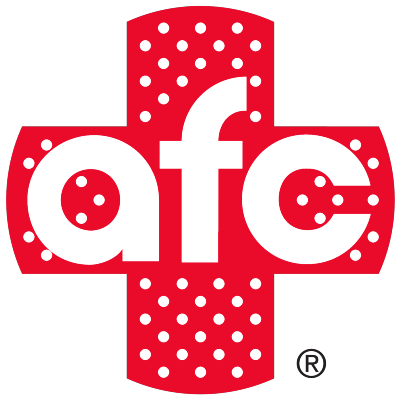Find The Location Nearest Covid-19 Testing
We think you’re located in zip code 28277. Not Right?
Abscess Incision & Drainage in Ballantyne NC | AFC Urgent Care
Looking to treat a skin abscess or cyst? Visit AFC Urgent Care in Ballantyne NC today for an Incision & Drainage procedure. No appointment required.
Contact us today to learn more about Incision & Drainage.What’s the difference between a cyst and an abscess?
Differentiating between a cyst and an abscess is important as they share a similar appearance but have distinct causes and characteristics.
A cyst is an abnormal formation of cells that creates a sac or cavity on the surface of the skin or inside the body. It may contain fluid or pus and may feel like a hard lump. Cysts can be found anywhere and often go unnoticed unless they become large or cause discomfort.
An abscess is a sac filled with pus that develops when the body tries to combat an infection caused by bacteria, fungi, or parasites. Skin abscesses are the most common type of abscesses, forming beneath the skin.
For both abscesses and painful cysts, incision and drainage procedures are typically recommended. If a cyst is detected, it may not require removal unless it becomes larger or more painful over time.
Skin Abscess Symptoms
If you have an abscess, there are some signs you can look for. The main one is a painful, squishy part of your skin that might look like a big pimple or an open sore. The skin around it might be red and feel sore and warm when you touch it. You might also see pus coming out of the wound. Other signs of an abscess can include:
- Redness
- Swelling
- Hard layer of skin
- Fever & chills (in severe cases)
What causes a skin abscess?
An abscess, which is a painful infection, can occur when bacteria become trapped under your skin as a result of blocked sweat or oil glands. If left untreated, the infection and inflammation can become severe and lead to the need for medical intervention. Additionally, a cut or nick in your skin can make it more susceptible to bacterial infection and the development of an abscess.
Certain risk factors can increase the likelihood of developing an abscess, including:
- Diabetes
- Severe eczema or acne
- Smoking
- close contact with someone who has a Staphylococcus (staph) infection
- Weakened immune system.
It’s important to be mindful of these factors and take precautions to reduce your risk of developing an abscess.
Do I need Incision & Drainage?
If you have a painful abscess or cyst that’s causing pressure and discomfort, you likely need Incision & Drainage. The purpose of this procedure is to drain the fluid, which can help to reduce the size of the abscess or cyst and prevent the spread of infection. Without I&D, your abscess is unlikely to fully heal on its own.
It’s important to note that antibiotics alone are not effective in treating an abscess or cyst. While they may kill bacteria in the area surrounding the abscess, they cannot eliminate the bacteria that has formed within the abscess cavity.
If you have a skin abscess and are experiencing severe pain, discomfort, or pressure, it may be necessary to seek medical attention to determine if incision and drainage is the appropriate treatment option. Leaving an abscess untreated can lead to more serious infections and complications, so it’s essential to act quickly and seek treatment if necessary.
What happens during the incision & drainage procedure?
When you visit AFC Urgent Care for I&D, here’s what you can expect. The procedure generally follows a simple and consistent process but can vary depending on the abscess or wound being treated.
1. Your AFC provider will begin by numbing the area around the abscess with a local anesthetic. This will help minimize any discomfort or pain during the procedure.
2. Once the area is numb, your provider will make a small incision in the abscess, which will allow the pus to drain out. In some cases, a drain may be placed in the abscess to prevent it from re-accumulating.
3. If the wound is deep or large, additional incisions may be necessary.
4. When the procedure is complete, your provider will clean the area and apply a bandage.
5. Before you leave, an AFC team member will discuss aftercare instructions to care for your wound at home.
Incision & Drainage Recovery
After your incision and drainage procedure, an AFC team member will give you detailed instructions on how to take care of your wound at home. These instructions may include keeping the area clean and dry, as well as taking any prescribed antibiotics to prevent further infection. The healing time for your wound depends on the size of the abscess and may take up to one or two weeks. As the wound heals, new skin will grow over the bottom and sides of the abscess.
Although complications from this procedure are rare, contact AFC Urgent Care or a medical professional immediately if you experience any bleeding, increased pain, redness and swelling or fever.
 How Can We Help?
How Can We Help?
- PATIENT SERVICES
- COVID-19 SERVICES
- TELECARE
- EMPLOYER RESOURCES
- PATIENT RESOURCES
- ABOUT US

Don't wait to get the medical attention you need.
CALL US TODAY | (704) 337-0221


